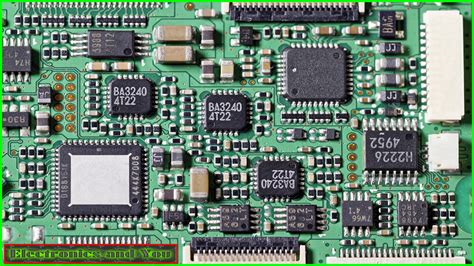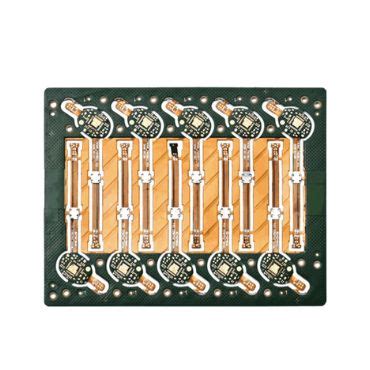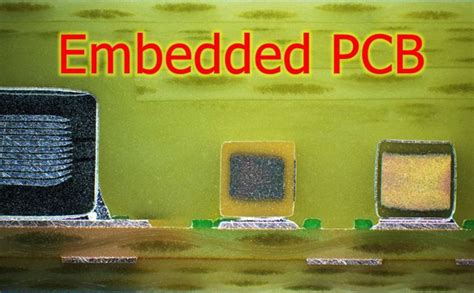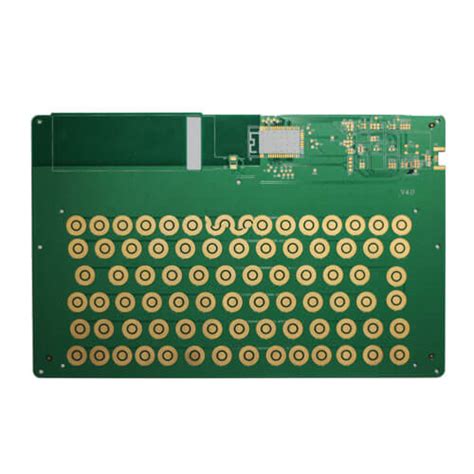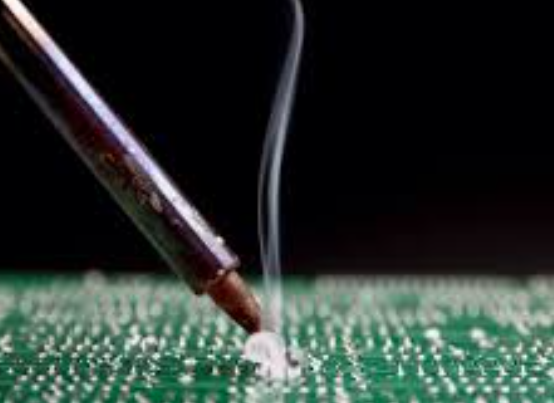Mastering Circuit Board Assembly: A Guide to Precision and Efficiency
Key Takeaways
In the realm of pcb assembly, understanding the critical aspects of the assembly process can significantly impact production outcomes. Essential to achieving precision and efficiency, a thorough comprehension of both the foundational techniques and advanced practices in pcba is paramount. First and foremost, the meticulous placement of components plays a vital role in ensuring functionality; slight misplacements can lead to failures in circuit performance. Furthermore, adopting effective soldering techniques—ranging from manual methods to automated systems—can enhance the reliability of connections, ensuring long-lasting operation. Emphasizing quality control measures also proves critical; consistent evaluations throughout the production process help identify potential issues before they escalate. Eventually, embracing automation within circuit board assembly not only improves efficiency but also allows for higher precision levels as complexity increases in modern designs. Staying informed about future trends is equally important, as innovations in materials and methods continue to reshape the landscape of electronic manufacturing. As professionals navigate these facets of pcb assembly, they cultivate an environment conducive to successful production and delivery of high-quality electronic products.
Introduction to Circuit Board Assembly: The Foundation of Electronic Manufacturing
The realm of pcb assembly is fundamental to the broader landscape of electronic manufacturing. At its core, pcba (printed circuit board assembly) involves the meticulous integration of various components onto a substrate, creating a functional electronic unit. This process not only encapsulates the physical assembly but also requires a comprehensive understanding of electrical engineering principles. It emphasizes precision in placement and soldering, ensuring that each connection facilitates optimal performance.
In the manufacturing sector, especially with the rise of advanced electronics, efficiency is paramount. Streamlined pcb assembly means minimizing waste and maximizing throughput, often aided by sophisticated machinery and automated processes. By embracing best practices in component placement, manufacturers can significantly enhance the reliability of their products while reducing the likelihood of defects during production.
“Effective circuit board assembly is not just about putting pieces together; it’s about crafting reliable solutions that meet market needs.”
Furthermore, staying ahead in this competitive field necessitates an ongoing commitment to quality control measures throughout the entire pcba process. Monitoring each phase helps identify potential issues early on, ultimately leading to successful outcomes and satisfied customers. As technology evolves, so too must the techniques employed in circuit board assembly, making continuous learning and adaptation essential for those involved in electronic manufacturing. This foundation supports not only today’s production needs but also lays the groundwork for future innovations in this ever-evolving industry.
Essential Tools and Equipment for Circuit Board Assembly
In the realm of pcb assembly, having the right tools and equipment is crucial for achieving precision and efficiency. The foundation of successful pcba lies in selecting tools that not only improve workflow but also enhance the quality of the final product. Essential equipment includes soldering irons with adjustable temperature settings, which allow for precise manipulation of electronic components. Additionally, a high-quality PCB holder ensures stability during the assembly process, preventing unnecessary movement that could lead to misalignment.
Other important tools include tweezers for accurate placement of small components and a reliable multimeter to validate electrical connections before finalizing assemblies. Using a stencil printer is also beneficial as it enables uniform application of solder paste on the boards, ensuring consistent results across multiple units. Furthermore, an efficient vacuum pick-up tool aids in handling delicate components without damage, solidifying its role as an indispensable part of any circuit board assembly toolkit.
Investing in these essential tools not only streamlines the workflow but also contributes to meeting industry standards and delivering a high-quality end product. Proper maintenance and familiarity with each tool enhance overall performance in pcb assembly, making it vital for both novices and seasoned professionals in electronic manufacturing to understand their significance.
Best Practices for Component Placement and Soldering Techniques
Achieving optimal results in pcb assembly necessitates an understanding of best practices for component placement and soldering techniques. Proper component placement is critical, as it directly influences the efficiency and reliability of the assembled board. Prior to starting the assembly process, it is essential to utilize automated placement systems whenever possible. These systems enhance accuracy, ensuring that components are positioned correctly according to the layout file. Additionally, maintaining an organized workspace can prevent errors during assembly; employing trays and labels for different components facilitates quick access while reducing the likelihood of misplaced parts.
In soldering, choosing the right technique is paramount for achieving strong electrical connections and overall integrity of the pcba. For instance, using lead-free solder not only meets environmental standards but also promotes reliable connections. Techniques like reflow soldering are beneficial for high-density assemblies, while wave soldering can be advantageous for through-hole components in larger boards. Moreover, ensuring that all surfaces are clean before soldering will enhance adhesion and performance.
Regular inspections throughout the assembly process should be integrated into best practices to catch potential issues early, thereby reducing rework costs and improving production efficiency. Following these best practices not only streamlines pcb assembly but also enhances overall quality control measures essential in electronic manufacturing.
Quality Control Measures in Circuit Board Assembly
Effective quality control measures in pcb assembly are vital for ensuring the reliability and performance of the final product. By implementing systematic processes, manufacturers can reduce defects and enhance efficiency throughout the production cycle. Key components of a robust quality control strategy include inspection protocols, testing methods, and performance evaluations.
One common approach is to conduct initial inspections on components before they are placed onto the pcba to ensure they meet specifications. This can involve visual checks and automated optical inspection (AOI) systems that assess component placement accuracy and solder joint quality. Regular process monitoring is also crucial; it helps identify trends that could signal emerging issues, allowing for timely interventions.
To provide a clearer understanding of these measures, consider the following table outlining various quality control techniques used in circuit board assembly:
| Quality Control Technique | Description | Benefits |
|---|---|---|
| Visual Inspection | Manual checks of component placement and solder joints | Quick identification of errors |
| Automated Optical Inspection | Use of cameras to detect defects in soldering or component placement | Higher accuracy and efficiency |
| Functional Testing | Electrical testing after assembly to ensure operational integrity | Confirms performance before delivery |
| X-ray Inspection | Used for complex assemblies to assess hidden solder joints | Detects issues invisible to the eye |
Incorporating these techniques into the pcb assembly process not only enhances product reliability but also promotes greater customer satisfaction. By focusing on quality control measures throughout every stage of production, manufacturers can maintain high standards in their pcba, thereby setting themselves apart in a competitive marketplace.
Troubleshooting Common Issues in Circuit Board Production
In the realm of pcb assembly, various challenges can arise, impacting the overall efficiency and quality of the finished product. One common issue is the presence of solder bridges—unintentional connections between two or more pads that can result in short circuits. To troubleshoot this, it’s crucial to examine both the soldering technique used and the quality of the solder paste application. Another prevalent problem is component misalignment, which can lead to poor electrical connections or even damage during assembly. Utilizing precision placement tools and double-checking component orientation prior to soldering can greatly mitigate this risk.
Moreover, defective components pose a significant challenge in pcba processes. Implementing rigorous testing methods—such as using an Automated Optical Inspection (AOI) system—can help identify defective parts before they are soldered onto the board. Furthermore, managing thermal issues during soldering is crucial; overheating can affect both component lifespan and functionality. Employing temperature-controlled soldering techniques ensures that components remain within safe operating limits throughout assembly.
Lastly, it’s essential to maintain a clean environment during production to prevent contamination from dust, oil, or residue that may affect solder adhesion. A comprehensive understanding of these potential issues allows manufacturers to implement effective preventive measures, leading to higher quality outcomes and increased productivity in their circuit board assembly operations. By focusing on precision and attention to detail in troubleshooting, companies can enhance their overall efficiency and effectiveness in electronic manufacturing processes.
The Role of Automation in Enhancing Efficiency
In today’s dynamic landscape of pcb assembly, automation plays a pivotal role in boosting efficiency and precision. Automated systems, including robotic assembly lines and advanced software, streamline the pcba process by minimizing human error and maximizing speed. This technology allows for the precise placement of components on the circuit board, ensuring consistent quality across large production runs. Moreover, automation facilitates real-time monitoring and adjustments, which significantly enhances quality control measures during the circuit board assembly process. By employing automation, manufacturers can expedite production cycles while reducing costs associated with labor and material waste. As a result, businesses can meet increasing market demands without compromising on quality or reliability. Embracing this transformative trend not only positions companies for success but also reinforces their commitment to delivering high-quality pcba that meets or exceeds industry standards. The integration of automation into the pcb assembly workflow ultimately leads to a more efficient production environment where innovation can thrive.
Advanced Techniques for High-Density PCB Assembly
In today’s rapidly evolving electronics landscape, high-density PCB assembly (PCBA) has emerged as a crucial component of successful electronic manufacturing. With the demand for smaller, more efficient devices, mastering advanced techniques in pcb assembly becomes essential. One effective method is the use of fine-pitch components, which facilitates a higher density of connections on a circuit board. Implementing precise soldering techniques, such as reflow soldering, ensures strong connections while accommodating compact layouts. Additionally, adopting multi-layer designs can significantly enhance circuit density while maintaining overall performance integrity.
Another key consideration in high-density PCBA is the integration of automated assembly processes. Automation not only boosts production speed but also minimizes human error, which is critical when dealing with intricate layouts. Advanced inspection technologies, such as automated optical inspection (AOI), further enhance the reliability of the assembly process by identifying defects early on.
Moreover, utilizing high-performance materials can improve thermal management and reduce signal interference in densely packed designs. Coupling these strategies with an emphasis on careful planning and layout design can lead to successful outcomes in both efficiency and precision. Embracing these advanced techniques positions manufacturers to meet the challenges posed by modern electronic demands, ensuring that high-quality PCBA remains at the forefront of innovation in technology.
Future Trends in Circuit Board Assembly and Manufacturing
As technology continues to evolve, the landscape of pcb assembly and manufacturing is poised for significant changes. One of the most notable trends is the increasing integration of automation in pcba processes. These advancements not only enhance efficiency but also contribute to greater consistency in production quality. Moreover, miniaturization demands higher-density designs, propelling the need for advanced techniques in circuit board assembly that can accommodate complex layouts while ensuring reliable performance. Additionally, the use of smart manufacturing with real-time data analytics is reshaping production methodologies, allowing for proactive adjustments to be made swiftly during the assembly process. Embracing these innovations can lead to more streamlined operations and superior outcomes in electronic manufacturing, making it imperative for companies to stay abreast of such developments. Adopting these trends ensures a competitive edge while meeting the increasing expectations for quality and reliability in today’s fast-paced market.
Conclusion
In conclusion, mastering pcb assembly is a critical step in ensuring the success of any electronic manufacturing project. Throughout this guide, we have explored various aspects of pcba, from the essential tools and equipment needed to advanced techniques for high-density PCB assembly. Each chapter provided insights into best practices that foster both precision and efficiency in production. By adhering to these practices and implementing robust quality control measures, manufacturers can significantly reduce the likelihood of common issues arising during production. Moreover, understanding future trends in circuit board assembly will enable companies to remain competitive in a fast-paced market. Emphasizing automation will not only enhance operational efficiency but also lead to consistent quality outcomes. As technology evolves, continuous learning and adaptation are key to thriving in the dynamic field of circuit board assembly.
FAQs
What is PCB assembly and why is it important?
PCB assembly (PCBA) is the process of connecting components to a printed circuit board (PCB), forming a complete electronic assembly. This process is crucial for ensuring that electronic devices function correctly and efficiently.
What are the main steps involved in the PCB assembly process?
The main steps include preparing the circuit board, placing components, soldering them onto the board, inspecting for quality, and performing testing. Each step is essential for achieving a high-quality final product.
How does quality control fit into PCB assembly?
Quality control measures are implemented throughout the pcb assembly process. This includes visual inspection, automated optical inspections, and functional testing to ensure that each assembly meets stringent quality standards.
What tools are necessary for effective PCB assembly?
Essential tools include soldering irons, stencil printers, pick-and-place machines, and inspection equipment. These tools enhance precision and efficiency in the pcba process.
What common issues arise during PCB assembly?
Common problems include misalignment of components, soldering defects like cold solder joints or bridges, and issues related to component compatibility. Troubleshooting these issues promptly can save time and resources.
How does automation impact efficiency in PCB assembly?
Automation streamlines various stages of pcb assembly, reducing manual labor and increasing accuracy. The use of automated machines can significantly speed up production times while maintaining high levels of precision.
For more detailed information regarding pcb assembly, please click here: https://www.andwinpcb.com/pcb-assembly/

